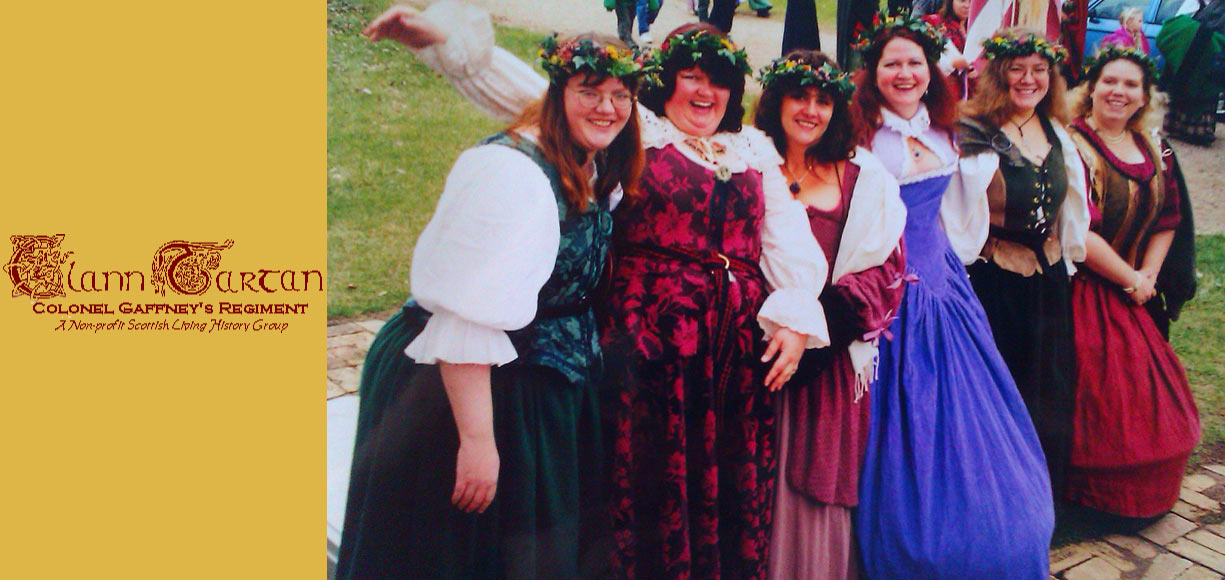Charms and Talismans
"Of course ye all ken that it is counter tae the regulations of Ms Majestie Gustavus Adolphus himself, for any soldier tae use inchantments or magicks. In truth, most of ye have heard the regulation read by our own company chaplain: "Nae commander, nor private souldier whatsaeever, shall use any kind of Idolatry, Witchcraft, or Inchantment of Armes, whereby God is dishonoured, upon pain of death."1 However, being for the most, poor, ingnorant Hielanders ye may be unawares of the customs of the Continent. Therefore, tae the end of preventing ye from being lead astray into temptation by your own ignorance, I will show ye a few charms and talismans whereby ye can "avoid" them if they be offered tae ye."
One of the most widely used charms was a coin with the image of St. George, patron saint of knights and fighting soldiers. This type of talisman developed from the Mansfeld thaler. First minted in 1521, it was commissioned by a Count von Mansfeld and honored his family's patron saint. An imperial officer was said to have been shot in battle, but saved from injury by a Mansfeld thaler he carried. The tale quickly spread and the cost of the thalers rose, thanks to smart middlemen, 10-20 times the original price. Faith in the legend was renewed when a colonel of the Sachsen family, von Lisbau was supposedly twice saved by a Mansfeld thaler sewn into his clothing.
During the 30 Years War and the wars against the Turks it is said that all officers and even some common soldiers wore these thalers. Eventually, demand was so great that some businessman started minting a special St. George talisman. These talismans were of various sizes, silver, gilt, or bronze, and all one type. On one side was St. George on horseback, thrusting his lance at a dragon with an inscription: "S. GEORGRJS. EQUITUM PATRONUS." (St. George, protector of knights) The other side had a ship with a taut sail on a rough sea and Christ asleep on the deck with two terrified apostles. A wind blows through a small cloud into the sail. The inscription: "IN TEMPESTATE SECURITAS. (Safety, or security in the storm). For our purposes, it may be this type of charm that Gustavus is referring to as "idolatry" - the worshiping, or paying to a saint was disapproved by Protestants. However, it would be appropriate to have some as personal accoutrements since they seem to have been so common.
In addition to talismans were ceremonies and charms to give weapons magical power, or protect the user: To overcome anyone with your sword - Take the tongue of a rat and the heart of a bat, bind them together with red silk thread and have them inserted into your sword; you will be victorious everywhere.
Or, Have inserted into the hilt of your sword a piece of the spoke of wheel on which an executioner has broken the bones of a poor sinner; every opponent will immediately break his rapier when fencing with you.
For cutting thrusting and firing - Take the skull of a man who has been hanged, or broken on the wheel, that is covered with moss when you find it; remember where it is and leave it lying there. The following day go to the same spot and place the skull so that you can take the moss off it: then on Friday before daybreak, go to the place where the skull lies and say these words: "I (name) beseech thee at this moment Thou, my Lord Jesus Christ, son of the pure Virgin Mary, to assist me in my purpose and help me bind the hands of all my enemies and help me overwhelm everything they use for thrusting and everything they have made of iron; Lord Jesus, son of Mary, help me in this purpose, In the name of the Father .. etc. Amen." Pull off the moss, wrap it in a kerchief and have it sewn into your jacket under the left shoulder, but so that you do not feel where it is; wear it always and no one will be able to wound you either by shot, cut, or thrust.
Now remember, I only mention these things for your protection -That is, I mean, so you WON’T use them and so you won't get caught by the chaplain. I also have pictures of astrological signs and talismans that you "should NOT" engrave on your sword blades. Ask me and I'll photocopy them for you - so you will know what to "not" to do.
1. Dow, Alexander C., Ministers to the Soldiers of Scotland,
Source: Wagner, Eduard. Cut and Thrust Weapons.

